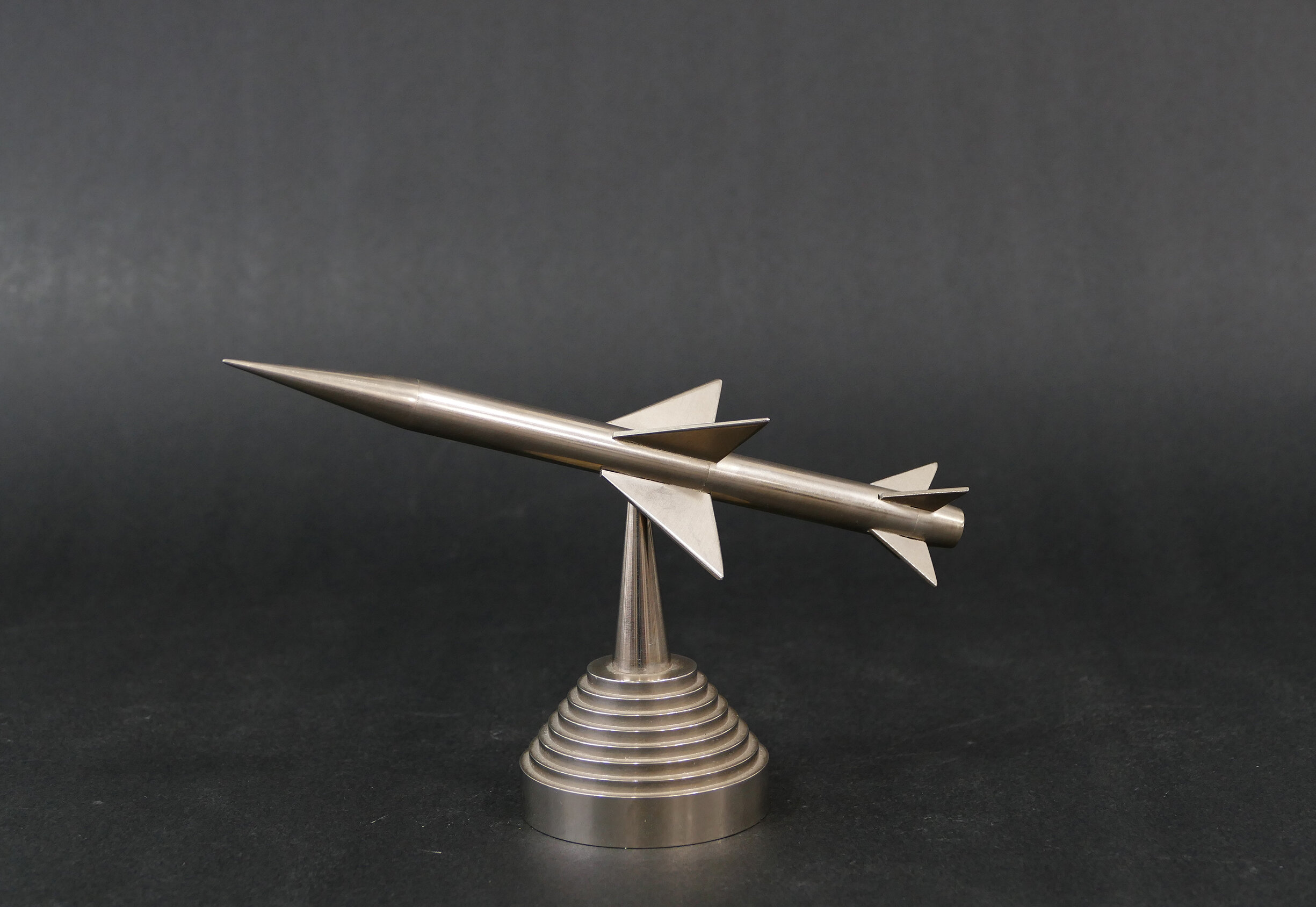1950-60 Missile / X-Wing Wind Tunnel Model on custom mount
1950-60 Missile / X-Wing Wind Tunnel Model on custom mount
A quite beautiful model most likely use in the small hypersonic test chamber due to size 8”. The model is machined from aluminum to exacting specs and is mounted in a custom base that was likely done after as a keep sake for display. Stepped base is characteristic of a 50’s type design and there are many test of these types of rockets from the late 50-60’s when hypersonic testing and fin design ‘canard’ placement was tested.
Possible variant in the Becker study group which was the predecessor to the X-15 as many test were created using many possible configurations .
You can see that the model comes apart and the canards can be altered to test out a variety of configurations—a very telling sign that this a precise testing model and you can see another configuration pictured with only two canards.
The greatest contribution made by X-15 operations to the Shuttle program, however, was the energy management procedures that were developed for unpowered X-15 approaches and landings at Edwards. X-15 pilots used the “Drinkwater Approach” that was established by NACA Ames test pilot Fred Drinkwater to make power-off approaches in an aircraft that had a poor lift-to-drag ratio (L/D) and steep glide angle compared to many conventional aircraft. The X-15’s ten-year operational record proved that the Drinkwater Approach could be used safely and reliably. Not long after the conclusion of the X-15 program, when designers of the Shuttle (another low L/D design) realized that their plans to deploy air-breathing engines for approach and landing would be prohibitive in terms of weight and complexity, the X-15’s use of the Drinkwater Approach provided a solution. As X-15 and Shuttle pilot Joe H. Engle noted at the close of the 30-year Shuttle program, "If it were not for the energy management procedures that were demonstrated during the X-15 program, it would have taken longer to proceed with the Space Shuttle...the X-15 allowed us to have confidence that it was not necessary to develop air breathing engines to make the approach and landing task more benign."







